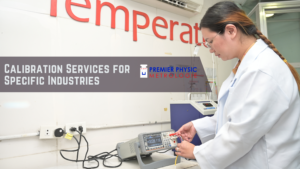Workplace satisfaction is a crucial aspect of employee well-being, directly impacting productivity and organizational success. In this article, we explore the significance of boosting workplace satisfaction in the Philippines, identifying key factors, measurement metrics, and strategies for improvement. We delve into the role of employee surveys, analyze survey data, and share success stories. Additionally, we address challenges in enhancing workplace satisfaction and highlight future trends. Employers will find practical tips to implement, accompanied by employee testimonials.
Introduction
In today’s competitive business landscape, focusing on workplace satisfaction has become a strategic imperative for organizations. The Philippines, with its vibrant workforce, provides a unique backdrop for understanding and enhancing employee contentment.
Understanding Workplace Satisfaction
Before diving into measurement insights, it’s essential to grasp the concept of workplace satisfaction. It goes beyond financial compensation, encompassing factors like job security, work-life balance, and interpersonal relationships at work.
Importance of Workplace Satisfaction in the Philippines
In the Philippines, where family and community values are deeply ingrained, workplace satisfaction directly influences employee morale. Satisfied employees are more likely to contribute positively to their teams and the organization as a whole.
Factors Influencing Workplace Satisfaction
Various factors contribute to workplace satisfaction, including leadership, communication, recognition, and opportunities for professional growth. Identifying these factors is crucial for devising effective strategies.
Measurement Metrics for Workplace Satisfaction
Establishing clear metrics is the first step in understanding and improving workplace satisfaction. Metrics may include employee engagement levels, turnover rates, and feedback from regular surveys.
Employee Surveys: A Key Tool
Conducting regular surveys allows organizations to gather valuable insights directly from employees. These surveys can cover topics such as job satisfaction, work environment, and overall well-being.
Analyzing Survey Data for Insights
Once survey data is collected, the next step is to analyze it systematically. This involves identifying trends, pinpointing areas of improvement, and recognizing strengths within the organization.
Strategies for Boosting Workplace Satisfaction
Armed with insights from surveys, organizations can implement targeted strategies to enhance workplace satisfaction. This may involve improving communication channels, introducing employee recognition programs, or providing skill development opportunities.
Success Stories: Companies Leading the Way
Highlighting success stories from organizations that have successfully boosted workplace satisfaction can inspire others. Case studies showcase tangible results and practical approaches that can be replicated.
Challenges in Improving Workplace Satisfaction
Despite the benefits, enhancing workplace satisfaction comes with its challenges. Identifying and addressing these challenges head-on is essential for sustained improvement.
Future Trends in Workplace Satisfaction
As workplaces evolve, so do trends in employee satisfaction. Anticipating future trends allows organizations to stay ahead, proactively adapting to the changing needs and expectations of their workforce.
Practical Tips for Employers
For employers seeking actionable steps, practical tips are provided. These range from fostering a positive work culture to investing in employee well-being programs.
Employee Testimonials
Real-life testimonials from employees who have experienced a positive shift in workplace satisfaction offer a personal touch. These stories resonate with readers and provide relatable insights.
Conclusion
Boosting workplace satisfaction is an ongoing process that requires commitment and strategic efforts. Organizations that prioritize employee well-being not only attract top talent but also foster a positive workplace culture conducive to growth and success.
FAQs
- How often should employee surveys be conducted? Employee surveys are recommended annually for a comprehensive understanding of evolving sentiments.
- Can small companies implement workplace satisfaction strategies effectively? Yes, smaller companies can tailor strategies to their scale, focusing on personalized approaches and open communication.
- What role does leadership play in workplace satisfaction? Leadership plays a pivotal role, influencing employee morale through clear communication, empathy, and fostering a positive work environment.
- Are financial incentives the only way to improve workplace satisfaction? While financial incentives matter, non-monetary factors like recognition, work-life balance, and career development are equally important.
- How can organizations address diversity and inclusion in their workplace satisfaction initiatives? Organizations should actively promote diversity and inclusion, ensuring that all employees feel valued and supported in the workplace.




